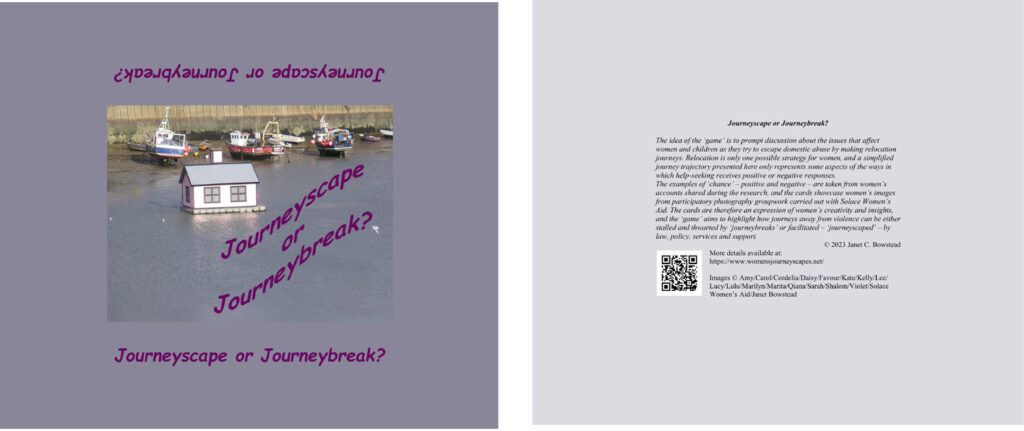Today is the International Day for the Elimination of Violence against Women – a day to stop and think…and then act. So it is connected to International Human Rights Day by the ‘16 Days of Activism’ – emphasising that violence against women is not just an individual problem, but is rooted in a systematic structural attack against women’s human rights.
Recognising violence against women as a human rights violation includes recognising how it affects home both as a material setting and as a source of safety, identity, meaning, and belonging. Domestic violence perpetrators attack the sense and reality of home, so that women and children can feel homeless at home. But the violence and threat also forces re-homing, as women and children have to escape; and it constrains any future home-making.
After the initial escape, women and children may be homeless for months and years – in temporary accommodation, in women’s refuges, staying with friends or family – seeking safety and security via complex displacement journeys.
As Louise said, in this research:
“It is very emotional, because you’ve set up home and you’ve tried to make things work; and you’ve got to leave somewhere that you thought of as home. And you do become quite attached—even though it’s just four walls and a roof—but, again, you make it yours; you put your stuff in there that you like, and then you have to pick up and leave it. But it’s just material at the end of the day—so it can all be bought again—and again and again and again! [laughs]—however many times you go through it!”
A new1 publication – the Routledge Handbook of Home – includes a chapter from the journeyscapes research detailed on this website. It explores dangerous homes of abusive relationships, limbo homes of women on the move, and re-made homes of safety and freedom. The harms and losses caused by abusers are part of how domestic violence challenges home realities and futures. The chapter discusses the insights that can be gained by opening the door and looking inside for the hidden reality of what goes on in homes.
1 Bowstead, Janet C. 2025. “Domestic Violence.” In The Routledge Handbook of Home, edited by Elaine Stratford and Katie Walsh. London: Routledge. https://doi.org/10.4324/9781003374428-33.
The Routledge Handbook of Home https://doi.org/10.4324/9781003374428.


